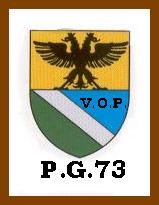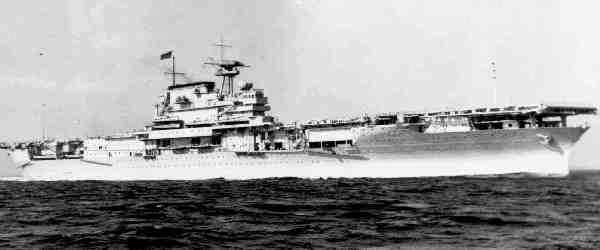 |
 |
 |
 |
 |
BATTAGLIA NAVALE DEL MAR DEI CORALLI
(BATTLE OF CORAL SEA)
(4-8 MAGGIO 1942)
 |
STORIA DELLA BATTAGLIA NAVALE DEL MAR DEI CORALLI
(HISTORY OF THE NAVAL BATTLE OF CORAL SEA)
TULAGI
(TRATTO DA "LA GUERRA DEL PACIFICO" DI B. MILLOT)
Avendo terminato, il 2 maggio alle 18, di fare rifornimento, il gruppo della Yorktown si diresse isolatamente a ovest con l'intenzione di effettuare ricognizioni aeree.
Le navi degli ammiragli Fitch e Crace, che ancora stavano rifornendosi, non poterono seguirlo, ma ricevettero l'or dine di portarsi, il 4 all'alba, in un nuovo punto di riunione a 15' sud e 157° est.
Il 3 maggio, alle 19, Fletcher ricevette un telegramma dal quartier generale di MacArthur: lo si avvertiva che due trasporti erano stati veduti dagli aerei di ricognizione, all'ancora a Tulagi.
Il giorno dopo, alle ore 8, Fletcher ricevette la conferma. I giapponesi sbarcavano quindi a Tulagi.
Sebbene fosse pericoloso disperdere le forze, le altre navi non avendo ancora raggiunto la Yorktown, Fletcher decise di effettuare un contrattacco prima che i giapponesi avessero avuto il tempo di attestarsi solidamente a Tulagi.
La portaerei Yorktown, scortata dagli incrociatori Chester e Portland e dai cacciatorpediniere Hammam, Anderson, Morris, Sims e Walke, si diresse a nord a 27 nodi e giunse, il giorno 4 alle 6.30 circa, 100 miglia a sud-ovest di Guadalcanal, da dove lanciò i suoi gruppi aerei.
Questa prima ondata comprendeva 28 bombardieri Douglas Dauntless in due gruppi, 12 aerosiluranti Douglas Devastator e 6 caccia Grumman Wildcat.
Gli SBD. Dauntless iniziarono l'attacco alle 8.15, seguiti cinque minuti dopo dagli aerosiluranti, quindi dal secondo gruppo di SBD., che attaccò alle 8.30.
Trovarono uno sbarramento di contraerea così debole e poco efficace, che non ostacolò le evoluzioni degli attaccanti.
I piloti americani vantarono al loro attivo la distruzione del cacciatorpediniere Kikuzuki, del dragamine Tama Maru e di 2 navi legere ausiliarie.
Alle 9.30 tutti gli apparecchi tornarono a bordo della Yorktown e Fletcher ordinò immediatamente una seconda incursione.
Gli aerei ripartirono questa volta 27 SBD. Dauntless eli TBD. Devastator.
Il secondo attacco fu deludente: gli Alleati affondarono soltanto 2 idrovolanti ammarati e danneggiarono una sola nave pattuglia, mentre un Devastator precipitava durante il volo di ritorno.
Poichè gli aviatori avevano segnalato, subito dopo l'appontaggio, la presenza di 3 idrovolanti a Tulagi, Fletcher fece partire nel pomeriggio 4 caccia Wildcat.
Durante l'attacco, essi mitragliarono il cacciatorpediniere Yuzuki, senza affondarlo, naturalmente, e 2 Wildcat furono costretti a compiere un atterraggio di fortuna a sud di Guadalcanal.
La notte seguente, i due piloti vennero tratti in salvo dal cacciatorpediniere Hammam.
Fletcher dubitava che i suoi aviatori esagerassero le distruzioni realmente all'avversario e voleva distruggere la testa di ponte di Tulagi prima che i giapponesi fossero in grado di reagire con violenza.
Pertanto ordinò alle 14, una nuova incursione con 21 SBD sperando cosi di farla finita con quella nuova base nipponica.
I Dauntless affondarono soltanto 4 chiatte da sbarco e non ebbero più fortuna dei loro predecessori; in compenso, non subirono alcuna perdita.
L'attacco a Tulagi era terminato e si concludeva con uno scacco dell'aviazione navale americana, che tradiva cosi la sua inesperienza e la sua inefficacia.
L'ammiraglio Nimitz, informato dei particolari di quei successivi attacchi aerei su Tulagi, criticò il vero e proprio spreco di proiettili, di carburante e di energia per risultati tanto grami.
Having finished, on May 2 to the 18, to make restocking, the group of the Yorktown he directed west isolatamente with the intention to effect aerial recognitions.
Admirals Fitch's ships and Crace, that were still supplying itself, could not follow him/it, but they received the or say to go him of it, 4 to the dawn, in a new point of reunion to 15' south and 157° east.
On May 3, to the 19, Fletcher received a telegram from the general quartier of MacArthur: it was warned him/it that two transports had been veduti from the airplanes of recognition, to the anchor to Tulagi.
The day later, at the 8, Fletcher received the confirmation. The Japanese disembarked therefore to Tulagi.
Although it was dangerous to disperse the strengths, the other ships not having reached the Yorktown yet, Fletcher decided to effect a counterattack before the Japanese had had the time to solidly attest him to Tulagi.
The aircraft carrier Yorktown, escorted by the cruisers Chester and Portland and from the destroyer Hammam, Anderson, Morris, Sims and Walke, directed him to north to 27 knots and came, the day 4 at 6.30 o'clock around, 100 southwest miles Guadalcanal, from where it launched his/her aerial groups.
This first wave included 28 bombardiers Douglas Dauntless in two groups, 12 aerosilurantis Douglas Devastator and 6 fighters Grumman Wildcat.
The SBDs. Dauntless began the attack at 8.15 o'clock, follows later five minutes from the aerosilurantis, therefore from the according to group of SBD., that attached at 8.30 o'clock.
They found an obstruction of anti-aircraft so weak and few effective, that didn't hinder the evolutions of the attackers.
The American pilots boasted to their asset the destruction of the destroyer Kikuzuki, of the mine-sweeper Tama Maru and of 2 ships auxiliary legere.
At 9.30 o'clock all the instruments returned on board of the Yorktown and Fletcher it immediately ordered a second raid.
The airplanes left again this time 27 SBDs. Dauntless heliums TBD. Devastator.
The second attack was disappointing: the Allies sank only 2 hydroplanes ammarati and they damaged an only ship it patrols, while a Devastator fell during the return flight.
Since the aviators had signalled, immediately after the appontaggio, the presence of 3 hydroplanes to Tulagi, Fletcher made to depart in the afternoon 4 fighters Wildcat.
During the attack, them mitragliarono the destroyer Yuzuki, without sinking it, naturally, and 2 Wildcat were forced to complete a landing of south fortune of Guadalcanal.
The following night, the two pilots were saved by the destroyer Hammam.
Fletcher doubted that its aviators really exaggerated the destructions to the adversary and he/she wanted to destroy the head of bridge of Tulagi before the Japanese were able to react with violence.
Insofar it ordered at 14 o'clock, a new raid with 21 SBDs hoping so to do ends her/it with that new basic nipponica.
The Dauntless sank only 4 unloading barges and they didn't have fortune of their predecessors anymore; in remuneration, they didn't suffer any loss.
The attack to Tulagi was finished and it concluded him with a chessman of the American naval aviation, that betrayed so its inexperience and its ineffectiveness.
The admiral Nimitz, informed of the particular ones of that following attacks airplanes on Tulagi, criticized the real waste of bullets, of fuel and of energy for so wretched results.
BATTAGLIA NAVALE DEL MAR DEI CORALLI (NAVAL BATTLE OF CORAL SEA)
LE PIU' GRANDI BATTAGLIE NAVALI (NAVAL BATTLES)
NAVI DA GUERRA / WARSHIPS AND BATTLESHIPS
PORTAEREI NELLA STORIA / AIRCRAFT CARRIER